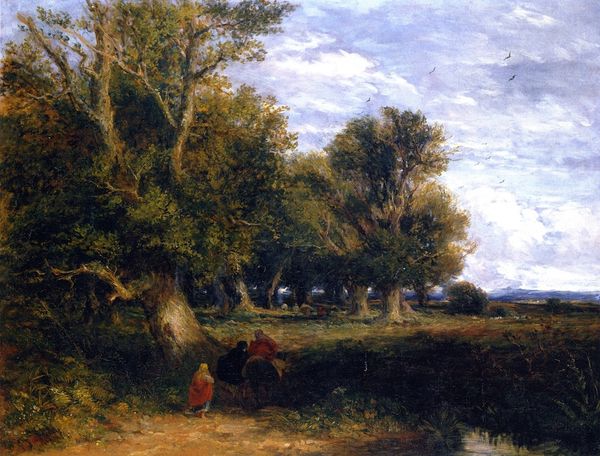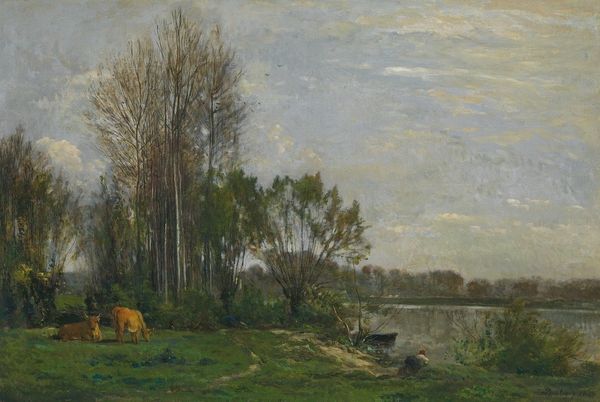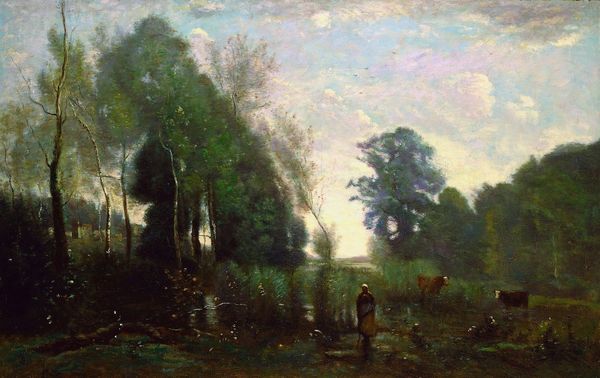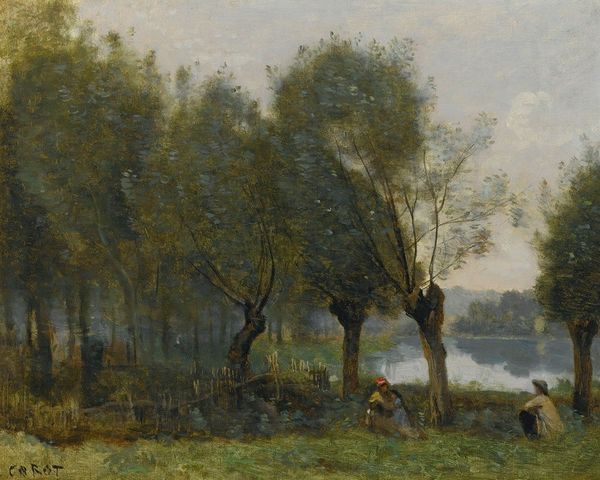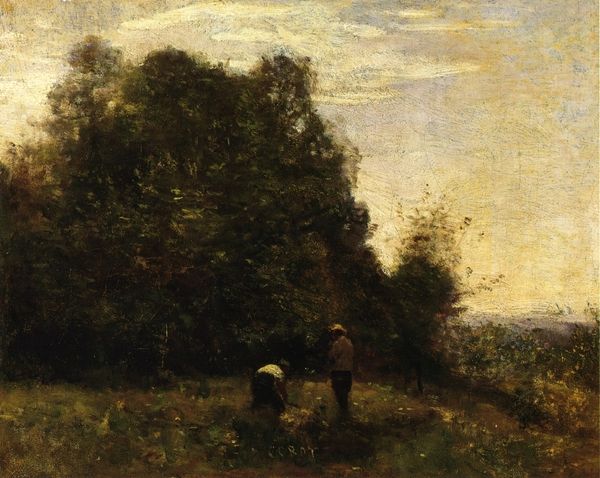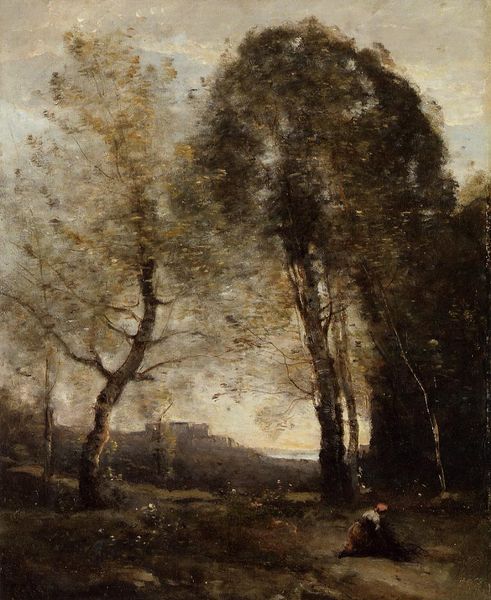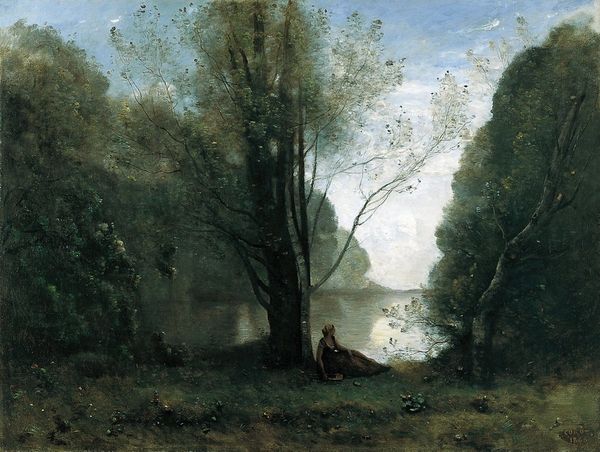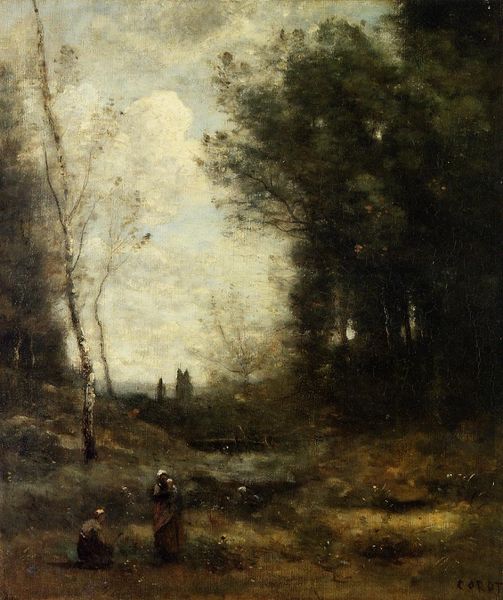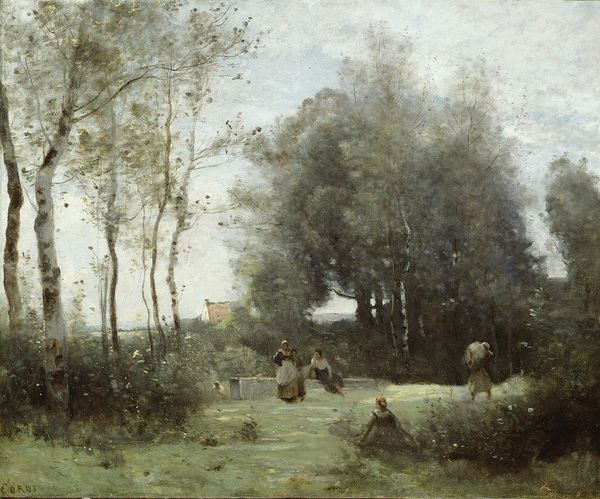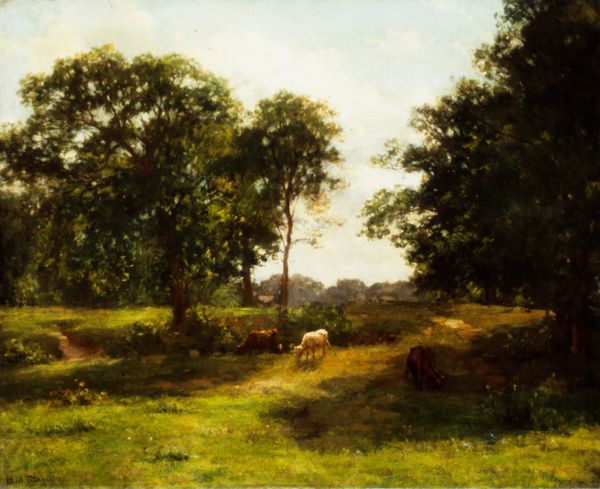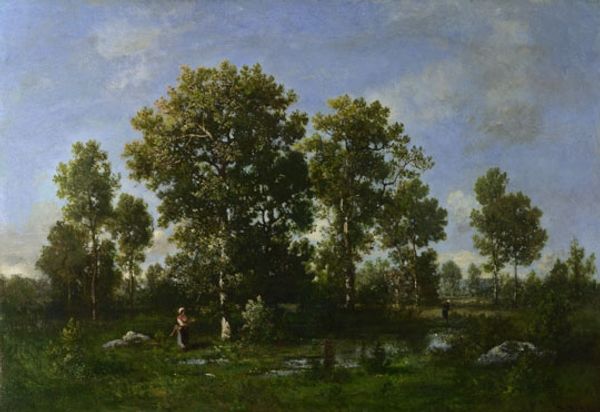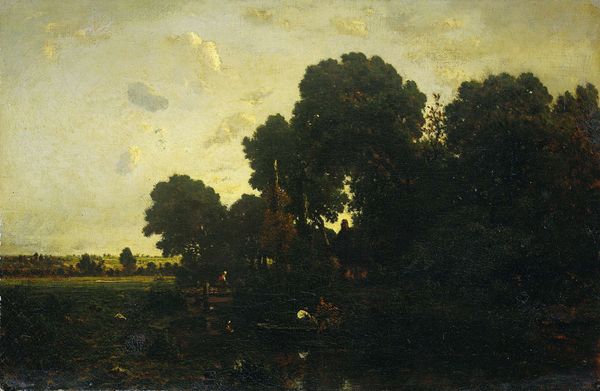
The Ponds of Ville d'Avray 1867
0:00
0:00
jeanbaptistecamillecorot
Portland Museum of Art (PMA), Portland, ME, US
painting, plein-air, oil-paint
#
tree
#
lake
#
animal
#
painting
#
countryside
#
impressionism
#
plein-air
#
oil-paint
#
landscape
#
impressionist landscape
#
nature
#
oil painting
#
natural-landscape
#
genre-painting
#
realism
Copyright: Public domain
Curator: The Portland Museum of Art holds this beautiful painting, “The Ponds of Ville d'Avray," by Camille Corot, created around 1867 using oil paints. Editor: There’s such a stillness to it. The colors feel muted, almost like a memory fading at the edges. A wistful quality, don't you think? Curator: Definitely a tranquil scene, even melancholic perhaps. You see that solitary figure in the center? There's an interesting dynamic here—the landscape seems indifferent to human presence, nature as an almost passive observer. The subdued palette seems to support this, an anti-heroic naturalism that distances itself from glorifying any idealized or embellished representation of nature. Editor: Yes, it's interesting you mention that sense of detachment. The positioning of that figure reminds me of debates surrounding pastoral ideals, especially in relation to labor. Considering the sociopolitical climate of the time—France in the throes of industrial change and class tension—I see a quiet commentary. There's a subtle, yet undeniable tension. What are the relationships between humans, animals and the land? Curator: An interesting viewpoint. And to consider it was likely painted *en plein air* lends a completely different perspective; a raw, in-the-moment response to the world right outside of Paris! His realism gives an air of unpretentiousness, an egalitarian, subtle sense of reality that opposes the academic tradition of grand, heroic landscapes. Editor: The ‘unpretentiousness’ you pointed out may also reinforce an ongoing discussion regarding artistic authorship, since many women, who, throughout centuries, have remained largely overlooked or excluded from formal recognition for contributing to—or spearheading!—artistic movements, have expressed their creativity through plein air in a less 'public' setting, or what could be seen as 'private' and dismissed by the traditional artistic structures as mere ‘decoration’ or 'hobby.' Curator: A good point. I hadn’t considered the socio-historical gender context. Corot manages to distill such complicated social dimensions down into simple aesthetic moments. Editor: Absolutely. I initially perceived wistfulness, and now I see an encapsulation of both yearning and a certain critique. A view framed with a melancholic tone reflecting the shifting landscape, socially, culturally, and politically.
Comments
No comments
Be the first to comment and join the conversation on the ultimate creative platform.

